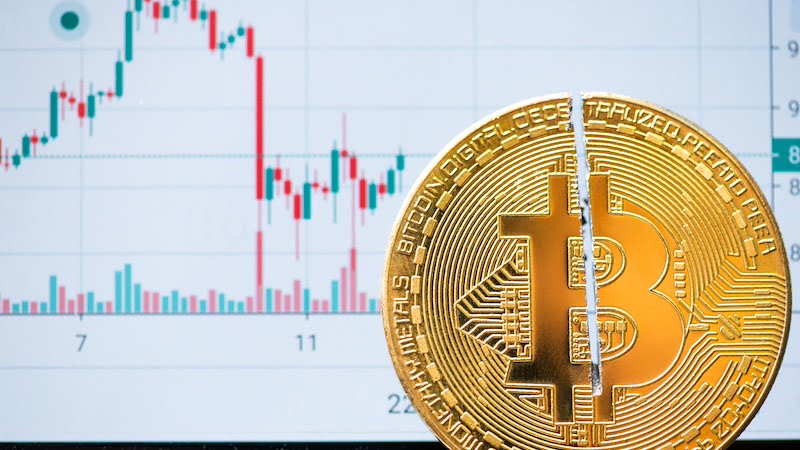
The cryptocurrency Bitcoin has been on the market since 2009 – now the next Bitcoin halving is imminent. But what does that actually mean?
Among digital payment methods, Bitcoin is by far the most successful cryptocurrency. This is particularly evident in the market capitalization.
In April this was around 1.31 trillion US dollars. This means that Bitcoin has left the competition far behind. Ethereum and Tether, for example, which are in second and third place, only have a market capitalization of around 402.14 and 105.33 billion US dollars, respectively.
But despite its success, Bitcoin, like any other currency, is not protected from money market phenomena such as inflation. So that this does not happen with Bitcoin, the so-called Bitcoin Halving takes place regularly.
Was ist Bitcoin Halving?
The word halving comes from English and means something like halving. And that’s exactly what happens with Bitcoin Halving.
The system halves the reward that the so-called miners earn by mining new Bitcoin. The miners receive this payment for providing their computing capacity – of course also directly in Bitcoin.
This process happens regularly and automatically because it is written into the code of the cryptocurrency. The time interval between two halvings is not exactly known. The triggering of the process is tied to the number of Bitcoin blocks created.
This number amounts to 210,000, which mining reaches approximately every four years. So once the miners have mined 210,000 new Bitcoin blocks, the cryptocurrency automatically triggers the halving.
The next halving is imminent
The last Bitcoin halving took place in May 2020. The reward for the miners per Bitcoin block mined was reduced from 12.5 to 6.25 Bitcoin.
The next halving is currently imminent. Because this is triggered when the Bitcoin blockchain breaks the 840,000 block mark. The cryptocurrency is currently only around 100 blocks away from that. That's why the next and fourth halving of the cryptocurrency could be triggered this weekend.
Because the creation of a new Bitcoin block takes less than ten minutes. Between October 2022 and October 2023, miners needed an average of 9.82 minutes to mine a new Bitcoin block.
After the halving is complete, the miners will only receive 3,125 Bitcoin for each block mined. This is also intended to minimize the amount of Bitcoin put into circulation.
What are the effects of Bitcoin Halving?
Automatic Bitcoin Halving reduces the amount of Bitcoin flowing into the market at regular intervals. Tradable Bitcoins come onto the market more and more slowly over time.
If the demand for the cryptocurrency remains constant, this will lead to an increase in the price of the cryptocurrency. However, if demand increases due to the shortage of supply, this could have an even greater impact on the price of the cryptocurrency.
Halving naturally limits the amount of Bitcoin that can ever be created. Because only around 21 million can ever be created through this regular halving.
Therefore, the 33rd halving will be the last. If the development remains roughly constant, the last Bitcoin will probably not be mined until 2140.
Also interesting:
Source: https://www.basicthinking.de/blog/2024/04/19/bitcoin-halving/


